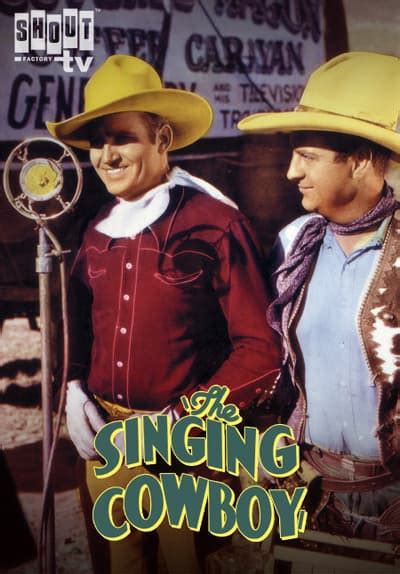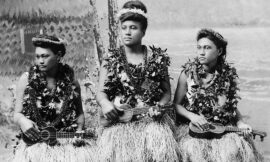 Hollywood often creates cultures from the movies it produces. The singing cowboy was one such creation. As far back as the 1920’s, the first singing cowboy appeared on the big screen. The western films of the singing cowboy were quite different from the traditional western. In the musical western, the cowboys rode alongside autos, used telephones, and raced airplanes.
Hollywood often creates cultures from the movies it produces. The singing cowboy was one such creation. As far back as the 1920’s, the first singing cowboy appeared on the big screen. The western films of the singing cowboy were quite different from the traditional western. In the musical western, the cowboys rode alongside autos, used telephones, and raced airplanes.
Beginnings of the Musical Western Movies
The silent movie actor Ken Maynard was the first actor who actually sang in a western movie. The movie was released in January of 1930; a movie called “Parade of the West.” He was followed by actor Bob Steele; though there is speculation if he sang the songs in his films or his voice was dubbed by his brother. He sang in only five of the 24 films he made between 1930 and 1934.
When John Wayne began making western movies at the tender age of 26, one of his first films was as the singing cowboy Sandy Saunders in “Riders of Destiny.” The problem was that though Wayne could act; he could not sing and therefore, his voice was dubbed in the movie by Smith Ballew. Wayne went along with this for a time but as the character of Sandy Saunders became more popular, it led to embarrassing moments for the actor when fans requested he sing during personal appearances. At that point, he refused to sing in any more westerns.
Gene Autry is the First King of the Cowboys
With Wayne’s refusal to continue as a singing cowboy, the production company needed to find another actor to take on those roles. Enter Gene Autry. He could sing, but unlike Wayne, he wasn’t that good of an actor. The production company, Republic Pictures, gave Autry a few acting lessons and cast him in a 12-week serial called “The Phantom Empire” which was a strange combination of western and science fiction; but exposed Autry to the audience such that when he made his next film, “Tumbling Tumbleweeds” the film was a hit as was the record.
Gene Autry was widely popular and became known as the King of the Cowboys. He rode a well-trained horse, Champion and lived by his own cowboy code:
- The hero must not take unfair advantage of anyone, including the bad guys.
- The hero must not hit anyone smaller than himself.
- The hero must always keep his word.
- The hero must not smoke or drink in public.
- The hero must not kiss the girl.
Autry’s rise to stardom was quick. His films did well and he was the only western star to be listed by movie theater owners as among the top ten money makers of film during the years of 1938 to 1942. In 1942 Autry enlisted in the military and by the time Autry was discharged in 1945; Roy Rogers had taken over as the King of the Cowboys. Autry elected to form his own film company, Flying A Productions. He went on to make more films and also produced “the Gene Autry Show” for CBS.
Autry was a shrewd business man and his financial empire began when he franchised his name and face. Over the years, he bought ten radio stations, a television station, a hotel, a flying school, a music-publishing company, a cattle ranch and a California baseball team. He continued to write and record songs including the well known “Rudolph the Red-Nosed Reindeer.”
Roy Rogers the Next King of the Cowboys
Though Roy Rogers never quite reached Autry’s level of record sales; he was the only one who gave Autry any competition as a singing cowboy star. Starting in the films in 1937, Rogers didn’t star until Autry’s absence during the war. Like Autry, Rogers’ popularity grew rapidly and it wasn’t long before he became the new King of the Cowboys.
Born Leonard Franklin Slye, Rogers changed his name several times over the course of his career. His entertainment career included stints with two friends in a band they called Sons of the Pioneers. He appeared in almost 100 films that spanned three decades of movie making, eventually surpassing Autry at the box office.
Rogers became even more of a household name when he starred in his own television show “The Roy Rogers Show” which co-starred his wife, Dale Evans and featured his famous horse Trigger, dog Bullet and Evans’ horse, Buttermilk. Evans wrote the song “Happy Trails” which became the show’s theme song and which is still widely sung today.
There were other singing cowboys, but none that could rival the popularity of Autry and Rogers. Other singing cowboys include:
- Tex Ritter
- Sons of the Pioneers
- Ken Curtis
- Monte Hale
- Bob Steele
- Dick Foran
- Kirby Grant
- William Boyd (Hopalong Cassidy)
The “B” western faded in the 50’s partly due to the appearance of the television shows that featured the singing cowboys. Rex Allen was considered the last of the singing cowboys. In more recent years, the singing cowboys have been parodied; the most notable is “Rustler’s Rhapsody,” a 1985 film starring Tom Berenger.



